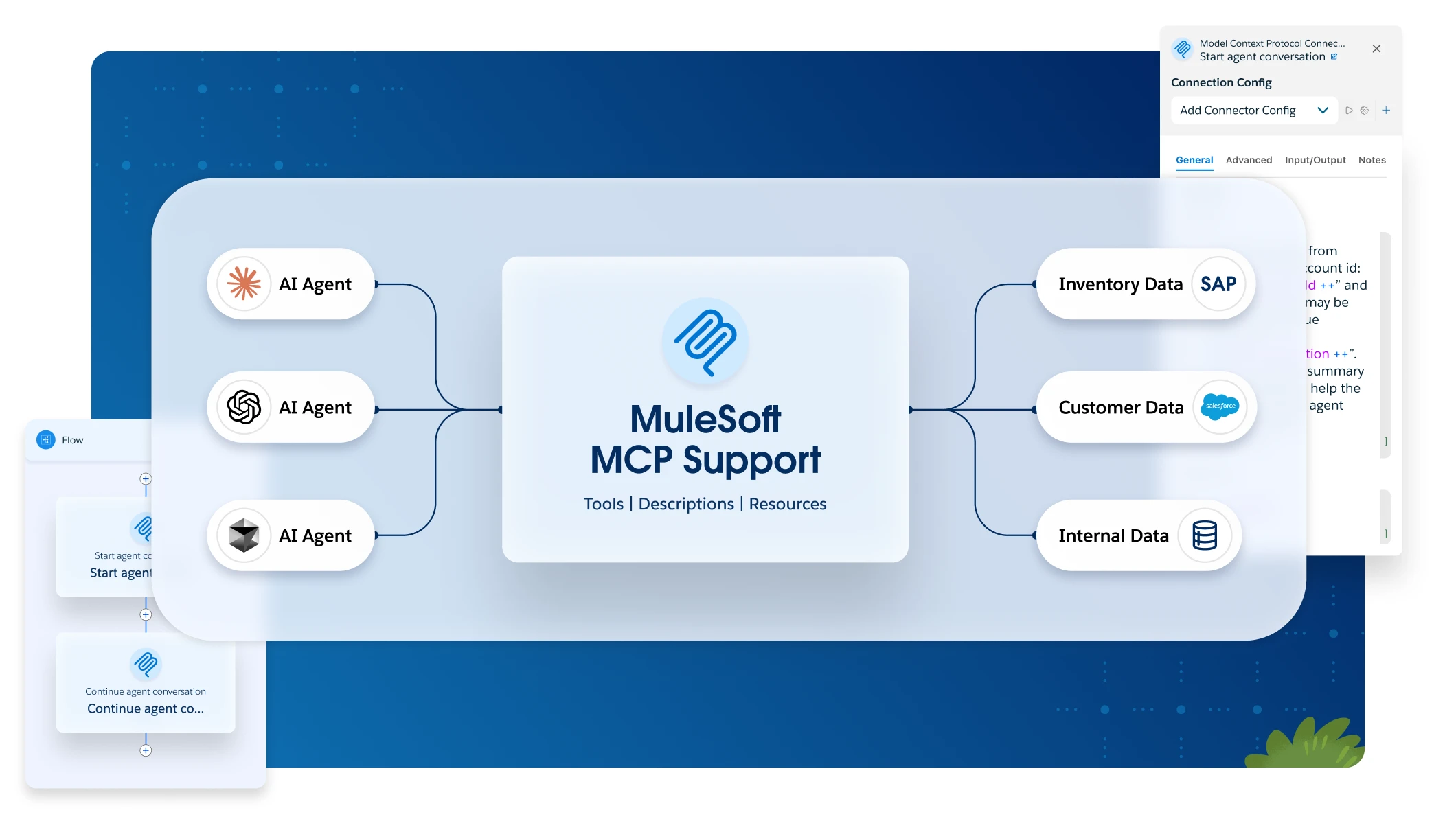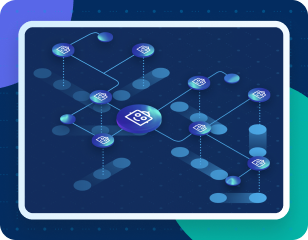For more than a decade, MuleSoft customers have been deploying their applications on CloudHub, MuleSoft’s fully managed iPaaS platform designed to simplify the deployment, monitoring, and management of Mule applications. In 2022, MuleSoft introduced CloudHub 2.0, an enhanced, Kubernetes-based platform built on years of iPaaS experience and insights. This replatforming has unlocked a range of exclusive features for our customers on CloudHub 2.0.
However, some users are hesitant to make the transition. Upgrading platforms for business-critical integration applications can seem intimidating, but the benefits are clear. CloudHub 2.0 offers years of advancements in security, performance, and support.
Supporting our customers through their CloudHub upgrade is a top priority for MuleSoft in the coming years. CloudHub 1.0 won’t be available indefinitely, and we aim to make this transition as smooth as possible.
CloudHub 2.0 is ready to meet your needs, and now is the perfect time to upgrade.
CloudHub 1.0 upgrade tool
The CloudHub 2.0 upgrade tool is UI-driven in-app experience that makes it easy for customers to transition to CloudHub 2.0.
Our goal is to provide a zero-downtime, guided upgrade process within the product, helping to accelerate the migration from CloudHub 1.0 to CloudHub 2.0. We understand that while some migrations will be straightforward lift-and-shift operations, others may be more complex and require changes before migration. Our migration tooling supports simple to moderate use cases and can be enhanced with customer-driven customization and service engagements.
The three-step process for upgrading from CloudHub 1.0 to 2.0 involves:
- Learning about the benefits of CloudHub 2.0
- Understanding the eligibility of your VPC and preparing to resolve any prerequisite issues
- Performing the upgrade to minimize service disruptions
Phase one of this tool, which enables upgrades to VPCs in CloudHub 2.0, is now live. You can watch a demo video of the VPC upgrade process here.
Our goal is to enable customers to use our tooling to copy all their configurations for an in-place VPC to private space upgrade. During this process, customers can work with their account teams to obtain additional entitlements if needed, allowing for a time-boxed upgrade and rollback to the CloudHub 1.0 VPC if the upgrade process encounters issues.
Phase two, which we intend to release in early 2025, will revolve around migrating applications to CloudHub 2.0.
After completing the VPC upgrade, users will be able to migrate their applications either one by one or in bulk. They’ll be able to create an equivalent CloudHub 2.0 app for each equivalent in CloudHub 1.0 and link the two to create weighted DNS records for both the CloudHub 1.0 and CloudHub 2.0 URLs.
Next, they can test their CloudHub 2.0 app by directing traffic to it and verifying network connectivity and app behavior.
If users want to retain the same vanity domains as they move from CloudHub 1.0 to CloudHub 2.0, they can manage this on their DNS record, pointing the vanity domain to the private space URL. Alternatively, they can link their apps and gradually switch traffic.
During this verification process, customers can also roll back to the CloudHub 1.0 application if needed.
Once the app is successfully upgraded, users will be able to stop or delete their CloudHub 1.0 application. After all applications are upgraded, they can clean up their DLBs and VPCs. Finally, they can complete the migration by shutting down CloudHub 1.0 resources and releasing entitlements. Once the CloudHub 1.0 resource is replaced by CloudHub 2.0, the CloudHub 1.0 asset will become immutable, and all changes will need to be made on CloudHub 2.0 going forward.
We are excited to support our customers’ journey to CloudHub 2.0, and this upgrade tool, targeted for the end of the year, is a small part of that.
- Phase 1: Automated upgrade to CloudHub 2.0 VPCs is available today
- Phase 2: Upgrading CloudHub 1.0 applications to CloudHub 2.0 is now available. For more information, visit the Application Upgrade Documentation.
An in-app upgrade tool is a great reason to start transitioning to CloudHub 2.0 today, but there are a huge amount of additional features and benefits available.
Efficiency
Our Kubernetes-based containerized architecture makes it easier for users to get started quickly and manage their integrations, APIs, and automations in a resilient, scalable environment. Upgrading to CloudHub 2.0 offers numerous advantages that can significantly enhance your operational efficiency. With its streamlined configuration for private spaces and network connectivity, you can set up environments faster than ever before.
The platform’s fully-managed infrastructure in the cloud, featuring auto-provisioning and scaling ingress, simplifies the configuration process and reduces overhead. Additionally, CloudHub 2.0’s lightweight container-based application isolation allows you to improve performance and scale quickly to meet demand, ensuring your applications run smoothly and efficiently.
Feature highlights
- Refreshed Runtime Manager: A new and improved Runtime Manager experience
- A unified configuration UI: Consolidated view of all connections/network configurations
- Customer control with audit and logging: More control when optimizing operations, with simplified audit log access
- Auto-scale to meet surges: Horizontal autoscaling aligned with MuleSoft’s new usage-based pricing model
- Always up to date: Auto-upgrades to the Latest OS and Security patches with our edge update cadence.
- Powered by K8s: Powerful performance and scalability derived from Kubernetes and realized by MuleSoft
- Dynamic load balancing: NLB that dynamically scales up and down
- Simplified setup: Isolated network environment via combining a VPC + DLB into one offering (Private Space)
- Instantaneous uploads: 30 seconds to upload an app and get it running in Shared Space with a public URL
Security
Replicas, a new structural concept for CloudHub 2.0 that replaces workers in CloudHub 1.0, provide a secure facility for transmitting and processing data by giving each application its own container. This ensures complete isolation for payload security.
Upgrading to CloudHub 2.0 provides enhanced control and security features that are essential for modern enterprises. You can now customize outbound firewall rules at the Private Space level, giving you more control over your network security.
The platform also offers the ability to store secure application properties in encrypted, private vaults, ensuring that sensitive information is only accessible to the application and not visible to users. Additionally, CloudHub 2.0’s comprehensive access management includes audited Role-Based Access Control (RBAC), which prohibits backend SSH access to customer deployments, further safeguarding your infrastructure.
Feature highlights
- Private Space firewall control: Customize outbound firewall rules at the Private Space level
- A Full Security Toolset: Ability to implement Edge policies, Secret Manager, and Tokenization
- Extensive role and ID management: Audited RBAC prohibits backend SSH access to customer deployments
Innovation
Time-to-value is crucial with the growth of AI. To meet demand, MuleSoft focuses on CloudHub 2.0 enhancements for seamless, regular innovation deployment. Upgrading to CloudHub 2.0 unlocks advanced monitoring capabilities and positions your organization at the forefront of innovation. With features like OTel Telemetry Exporter and Distributed Tracing, available exclusively on CloudHub 2.0 and RTF, you gain deeper insights and enhanced visibility into your operations.
MuleSoft’s commitment to the Kubernetes ecosystem ensures that CloudHub 2.0 will leverage the ongoing advancements in this space, providing robust and scalable solutions. Additionally, new features and products will be on boarded first on CloudHub 2.0, ensuring you have access to the latest innovations and cutting-edge technology available across MuleSoft.
Feature highlights
New features and products will be boarded first on CloudHub 2.0.
- Kubernetes innovation: MuleSoft is committed to K8s. We plan to leverage the benefits of the continued development of this ecosystem within CloudHub 2.0
- Advanced monitoring: Our advanced monitoring capabilities (OTel Telemetry Exporter, Distributed Tracing – currently in beta) are only available on CloudHub 2.0 and RTF









